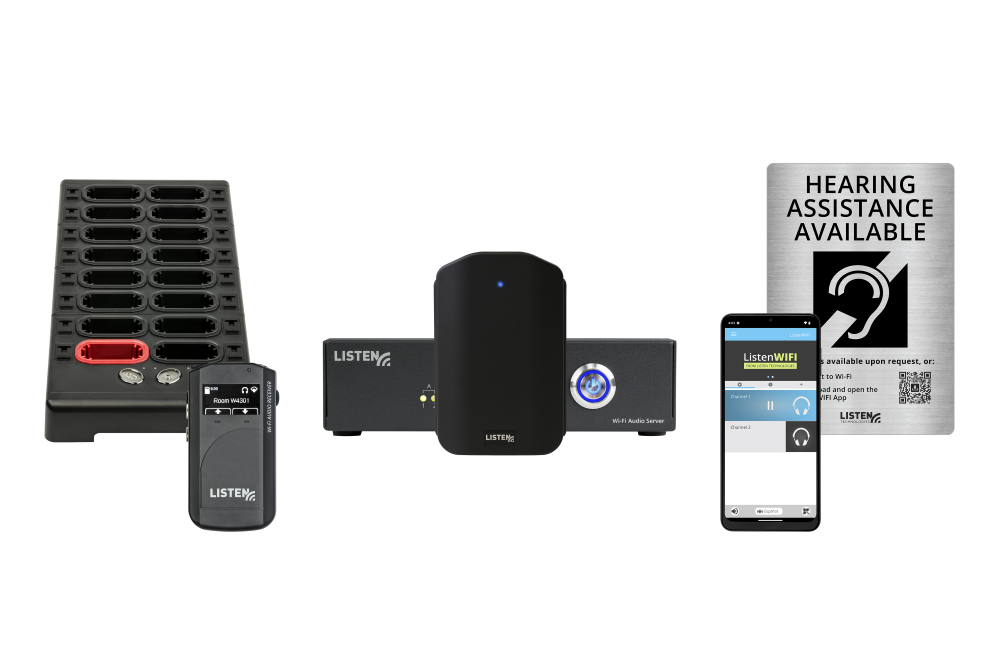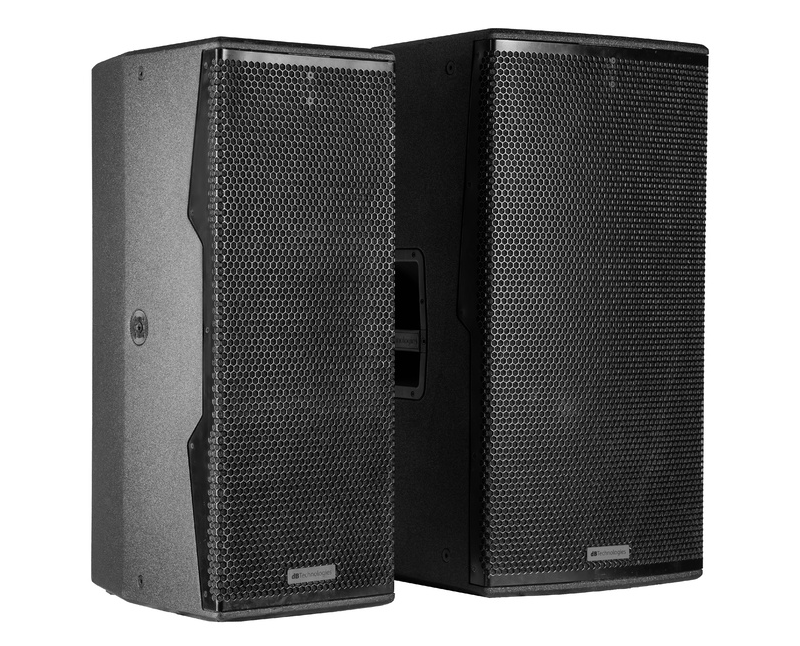AVB (Audio Video Bridging) Audio is a set of technical standards for synchronized audio data transmission over Ethernet networks. It provides precise audio stream timing through network synchronization.
AVB Audio ensures high-quality audio streaming with minimal latency, ideal for professional and consumer audio-video applications. The technology serves as the backbone for various multimedia environments, from recording studios to home entertainment systems. By utilizing the Ethernet standard, AVB Audio offers improved reliability and efficiency over traditional audio transmission methods.
It supports multiple audio streams and allows devices to be interconnected seamlessly, facilitating complex audio setups. As an evolving standard, AVB Audio garners attention for its potential in creating cohesive and synchronized multimedia experiences.
The Dawn Of Avb Audio
Imagine a world where sound travels without hiccups across devices. AVB Audio, or Audio Video Bridging, turns this dream into reality. It’s the latest revolution in sound technology. People experience seamless audio quality like never before. Welcome to the dawn of AVB Audio. It’s transforming the way we connect and listen.
Birth Of A Standard
AVB Audio began with a simple idea: to unify audio and video streaming. Industry leaders crafted a standard. They aimed for compatibility and quality. Organizations like IEEE defined this technology. Now, we call it the IEEE 802.1 Audio Video Bridging standards.
Key features of AVB include:
- Precise timing for cleaner sound and video
- Improved synchronization across devices
- Guaranteed bandwidth for multimedia traffic
- Easy device setup and control
The Vision For Tomorrow’s Sound
Imagine audio experiences tailored for every listener. AVB Audio is setting the stage for this future. Its network capabilities allow devices to share data efficiently. They make way for advancements like:
- Immersive live performances with perfect sync
- Complex audio setups in minutes
- Unified sound systems in smart cities
With AVB, sound no longer just surrounds us. It interacts seamlessly within our world.
Fundamentals Of Avb Technology
Audio Video Bridging (AVB) transforms networking. AVB technology provides precision audio and video streaming. This tech syncs multiple devices over a network. It promises a new era of synchronized, low-latency streaming.
Building Blocks of Audio Video Bridging
Building Blocks Of Audio Video Bridging
The building blocks of AVB consist of specialized components. These work together for seamless media transfer. Let’s decode these fundamental blocks:
- Timers and clocks maintain synchronization.
- Network switches allocate specific resources for AVB traffic.
| Component | Function |
|---|---|
| Endpoints | Initiate or receive AV streams |
| Controllers | Manage AVB connections and resources |
Protocols That Power AVB
Protocols That Power Avb
AVB runs on a set of protocols. Each protocol has a unique role. Here’s an overview of the key players:
- IEEE 802.1AS: Standardizes timing and synchronization.
- IEEE 802.1Qat: Manages reservation of network resources.
Other protocols like IEEE 802.1Qav control data traffic. They ensure timely and reliable delivery. Understanding these protocols is critical for AVB operation.
Benefits For Professionals And Audiophiles
Professionals and audiophiles alike seek the best in audio technology. Discover how AVB Audio advances the experience in key areas.
Enhanced Synchronization
Principal for live performances and recordings is precise timing. AVB Audio ensures tight synchronization between devices. With nanosecond precision, audio streams stay perfectly in sync. This guarantees a seamless mixing and processing experience, vital in professional settings.
Superior Audio Fidelity
Quality remains paramount for high-definition audio. AVB Audio supports lossless transmission, delivering pure sound. Audiophiles revel in the depth and clarity, while professionals benefit from accurate sound representation. Every nuance and subtlety is captured, elevating the auditory experience to higher realms.
Scalability And Flexibility
Large venues and studios require a system that grows with their needs. AVB Audio’s scalable nature allows for adding more channels or devices without compromising performance. Flexible network topologies offer a tailored solution, be it for small recording setups or expansive concert halls.
- Add devices on-the-fly with minimal disruption.
- Configure networks to meet specific requirements.
- Scale systems from small setups to large productions effortlessly.
Avb Vs. Traditional Audio Systems
Audio Video Bridging (AVB) is transforming how we handle audio streams over networks. Traditional systems are now competing with this new tech. AVB brings improvements in many areas. Let’s explore some key differences.
Latency Comparisons
In the realm of digital audio, timing is everything. High latency can ruin a live sound experience. AVB ensures low and consistent latency, outperforming traditional systems. Precise timing protocols within AVB maintain synchronization across devices.
Network Reliability
Audio streams demand consistent delivery. Traditional networks often face data collisions and delays. AVB uses reserved pathways for audio data, enhancing reliability. This method prevents traffic jams on the network, allowing seamless audio transport.
Quality Of Service
AVB shines with its Quality of Service (QoS). It manages data traffic to prioritize audio data. This ensures top-quality sound without interference. Traditional systems can’t match this level of service. They lack efficient data traffic management.
Below is a brief comparison:
| Feature | AVB | Traditional Systems |
|---|---|---|
| Latency | Low | Variable |
| Reliability | High | Medium |
| Quality of Service | Advanced | Basic |
Real-world Applications Of Avb
The audio world is constantly evolving with the integration of innovative technologies. Audio Video Bridging (AVB) stands out as an outstanding advancement. This technology allows precise synchronization and low-latency streaming of audio and video over Ethernet networks. Various industries have adopted AVB to deliver high-quality audio. Let’s dive into some real-world applications where AVB technology is making a significant impact.
Live Sound Reinforcement
Live events demand impeccable audio quality and synchronization. AVB offers just that. Technicians can route multiple audio channels with great precision. This ensures audiences enjoy crisp, clear, and perfectly timed sound. Global concerts and theatrical productions rely on AVB for:
- Flawless live performances
- Quick and easy setup
- Scalable systems for all event sizes
Studio Recording
In a recording studio, timing and quality are everything. AVB technology streamlines the recording process. Artists and producers benefit from its robust features. Some prominent benefits include:
- Low-latency tracking
- Perfect audio alignment in multi-track recordings
- Streamlined audio network setup
Commercial Installations
Commercial spaces like airports, shopping malls, and conference centers use AVB to disseminate audio. The tech facilitates seamless distribution of sound across large complexes. Here are the key advantages:
- Distributed high-quality audio over large areas
- Synchronized public address systems
- Easy integrations with existing infrastructure

Credit: www.prosoundweb.com
Setting Up Your Avb System
Audio Video Bridging (AVB) transforms how we handle media over network systems. To experience seamless audio transmission, setting up your AVB system correctly is crucial. This guide helps you through the process, ensuring a high-performance AVB network.
Essential Equipment
Gathering the right tools and devices is the first step in AVB setup. Here’s what you’ll need:
- AVB-capable switches – The backbone of your network.
- AVB-compatible audio devices – Speakers, microphones, etc.
- Network cables – For connecting all devices.
- Audio interface – To route audio in and out.
- Computer – Configures the AVB network.
Network Configuration Tips
Once you have your equipment, it’s time to configure the network:
- Install firmware updates first for all devices.
- Set up AVB switches – Enable AVB and prioritize audio traffic.
- Assign IP addresses – Use a consistent scheme.
- Connect devices to switches – Use quality network cables.
- Test the connections – Ensure clear signal paths.
Troubleshooting Common Issues
If you encounter problems, here are some tips to resolve them:
| Problem | Solution |
|---|---|
| Devices not recognized | Check cable connections and network settings. |
| Audio dropouts | Update device firmware and reset switches. |
| Poor audio quality | Adjust device buffer sizes and network latencies. |
Remember, a carefully planned AVB setup leads to a reliable network that delivers crystal clear audio.
Future Proofing With Avb
Audio Video Bridging (AVB) stands as a beacon of future tech in audio systems. It ensures your audio setup is not left behind in the swiftly evolving technological landscape. Opting for AVB means embracing a system designed to adapt, endure, and thrive in the face of new advances.
Compatibility With Existing Tech
One core benefit of AVB is its seamless integration with current technology.
- AVB devices coexist with legacy audio equipment.
- The use of standard Ethernet cables reduces the need for specialized connections.
- Upgrading to AVB can be incremental, protecting your investments.
These factors eliminate the need for a complete overhaul of your audio setup, offering a cost-effective transition to cutting-edge audio networking.
Adaptability To Emerging Trends
AVB’s design is inherently flexible.
- Its protocol accommodates new tech standards as they arise.
- AVB’s scalability means it grows along with your needs, preparing you for more complex applications.
- Diverse industry support ensures continuous development and updates.
With AVB, you invest in a system that is not just robust today, but one which evolves over time.
Avb Audio In Action
Imagine an audio network where every sound, note, and whisper syncs perfectly across devices. AVB Audio in Action paints this picture. Advanced audio systems in studios, live events, and installations use AVB protocol for pristine sound and seamless integration.
Case Studies
Discover real-world scenarios where AVB technology has transformed audio outcomes. Case studies highlight its impact:
- Stadiums achieving synchronized playback across massive speaker arrays.
- Music festivals delivering live performances without lag or distortion.
- Recording studios connecting multiple devices with flawless timing.
Industry Adoption
Wide-scale industry adoption signals AVB’s reliability. Key sectors include:
| Industry | Use Case |
|---|---|
| Entertainment | Concert venues and theaters |
| Corporate | Conference rooms and headquarters |
| Education | University campuses and auditoriums |
User Experiences
User testimonials highlight the efficiency and quality gains with AVB. Users often cite:
- Simplicity in setup and configuration.
- Scalability for growing audio demands.
- Improved audio fidelity and synchronization.

Credit: www.prosoundweb.com
Frequently Asked Questions Of What Is Avb Audio
What Is Avb Audio Technology?
AVB, or Audio Video Bridging, is a set of technical standards developed for audio-over-Ethernet. It facilitates real-time, precise audio and video synchronization over a network. AVB ensures high-quality streaming with low latency through network management protocols.
How Does Avb Audio Benefit Live Sound Production?
AVB Audio benefits live sound production by providing a reliable, low-latency networked audio solution. It allows for synchronous audio delivery, easy scalability, and simplified cabling, improving overall sound quality and system efficiency in live setups.
Can Avb Audio Integrate With Existing Networks?
AVB Audio requires compatible network hardware to support its protocols. While it may work within existing Ethernet infrastructures, ensuring all components are AVB-compliant is crucial for optimal performance and seamless AVB integration.
Are There Any Compatibility Concerns With Avb Audio?
Compatibility with AVB Audio depends on having AVB-compatible devices and a supporting Ethernet infrastructure. Non-AVB devices won’t communicate over an AVB network, thus one must check device specifications for AVB support.
Conclusion
Understanding AVB Audio is key for optimizing sound quality in networked environments. It’s essential for professionals in audio production and networking. Embracing AVB technology could elevate your audio streams to pristine clarity and precision. Stay informed on AVB developments to keep your sound solutions ahead of the curve.
Let AVB’s capabilities enhance your auditory projects today.